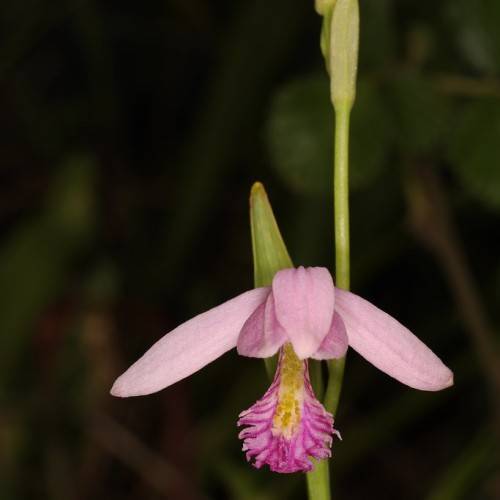
snakemouth orchid
Pogonia ophioglossoides
Cycle:
Herbaceous Perennial
Watering:
Frequent
Hardiness Zone:
3 - 8
Flowers:
Flowers
Sun:
Full sun,part shade
Leaf:
Yes
Growth Rate:
Low
Maintenance:
High
Thorny:
Yes
Care Level:
High
watering
Snakemouth orchids require very little water, which makes them an ideal choice for dry areas. It is best to water the plant at the base of the leaves. During the flowering season (mid-spring to early summer), the orchid can be watered lightly once or twice a week. During the non-flowering seasons (summer and winter), water can be reduced to once every 2 to 3 weeks. Make sure that the soil is allowed to dry completely before watering, as the orchid is susceptible to root rot if kept too wet.
sunlight
The Snakemouth Orchid (Pogonia ophioglossoides) is a part shade lover, so it will need at least 4 hours of direct sunlight per day. It needs partial shade or filtered sunlight during the hottest part of the day, which typically starts around mid-morning and lasts until late afternoon. Irrigation should be done only in the morning hours. Since this species prefers a humid climate, spraying the leaves with water during the day may also be beneficial. In general, it is best to provide this plant species with sunlight from the time the sun rises in the morning until around mid-day or early afternoon.
pruning
Snakemouth orchids can be pruned at any time during the growing season, but the best time to do so is when the flowers have completed blooming. During this time, it is important to remove spent inflorescences and dead flowers, in order to promote new blooms for the following season. When pruning, it is best to use sharp implements to ensure a clean cut. It is also important to avoid excessive pruning, as this can lead to stunted growth and reduced flowering. It is best to focus on removing any overgrown, damaged, or dead growth, as well as thinning out crowded stems to improve overall airflow and light exposure.
